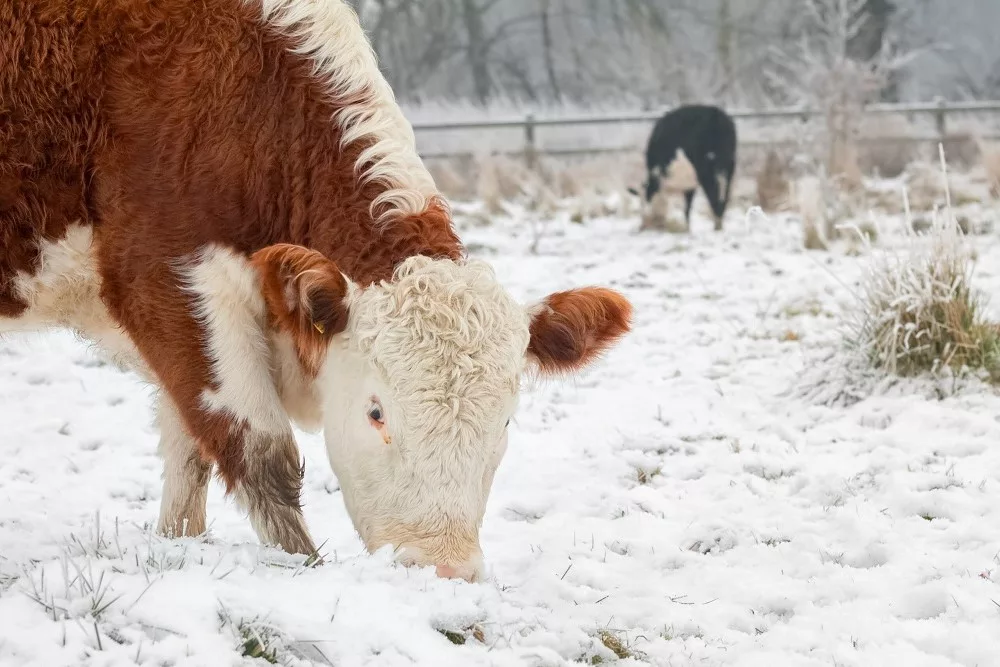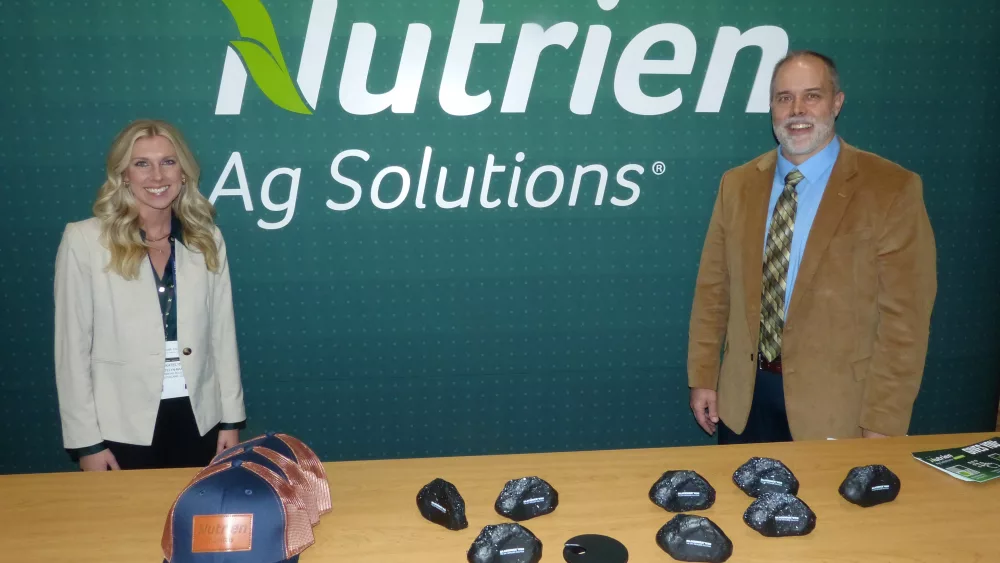
An arctic blast of extremely cold air is predicted to sweep across Indiana and the Midwest beginning on Saturday, Jan. 13 and last for more than a week. With temperatures expected to stay well below freezing for several straight days, it is important to make sure your cattle are prepared to make it through the frigid weather.
Cattle work to maintain a constant core body temperature of about 101ºF. During the winter months, the need for cattle to maintain their core body temperature becomes a challenge and can cause cold stress.
Cold stress in cattle is when their body temperature drops because their body’s natural metabolic processes plus the insulation provided by a heavy winter coat are not enough to keep them warm. If a cow has a dry, heavy winter coat, she can withstand temperatures below 20ºF before feeling any cold stress.
When cold stressed, cattle will change their behavior such as seeking shelter to avoid the cold. With good body condition, a clean, dry coat, shelter, fresh water and good nutrition, dairy cattle can tolerate temperatures well below zero.
Both dairy and beef cattle are incredibly hardy. Cattle can live outside in the winter and do quite well even during winter storms if provided with a few key components.
Acclimation
One of the most critical factors for your cattle is acclimation to the weather. Cattle expected to live outside during the winter should remain outside to adjust to the changing conditions as winter approaches. This will allow the cattle to grow a thick hair coat in preparation for the cold. The hair coat needs to stay clean and dry to provide the best insulation protection for the cow.
Windbreak
A windbreak is the single most important factor for the success of your cattle riding out severe winter weather. Cattle will often seek out windbreaks if one isn’t provided and prioritize getting out of the wind ahead of food and water in severe winter weather. Stands of trees, stacks of round-bales, buildings, or other man-made structures are examples of effective windbreaks. Windbreaks should be relatively tall, and the material should allow a small amount of wind to pass through. This helps prevent a downdraft when the wind passes over the top of the windbreak.
Bedding
After a windbreak, keeping cattle dry is the next most crucial factor for successfully getting through severe winter weather. Building a defined bedded pack behind your windbreak is one of the best ways to provide a dry place for your cattle. Packs work best when you start with a reasonably deep absorbent base and when a thin layer of new bedding is applied daily. If you don’t have a bedded pack usually, it is still very beneficial to provide deep bedding behind your windbreak when you know severe weather is approaching.
Body condition
The correct body condition for your cattle will help them overwinter and come into calving season healthy. Stable body condition through the winter months will ensure cattle are best prepared to ride out severe winter weather when it happens.
Feed
In extreme cold, cattle require more calories to maintain their body condition and stay warm. When the temperature approaches zero degrees Fahrenheit, you can expect to feed about 30% more than you would at temperatures above 32 degrees Fahrenheit. Using your feed to congregate your cattle where you want them to be ahead of incoming severe weather is a great strategy. When a storm is approaching, place feed behind your windbreak to encourage your cattle to stay there.
Water
Often forgotten, water is a key element to the health of your cattle. During severe winter weather, water access can be compromised and should be checked daily in the winter months. Without adequate water access, cattle will not eat as much and will lose body condition. If water is unavailable for long enough, cattle will attempt to eat snow, but they cannot consume enough snow for their water needs.
Avoid drifting snow
Creek bottoms, swales and other similar landscape features can be tempting places to use as windbreaks for your animals. The problem with using these locations is that they are the prime locations for drifting snow. High winds combined with snow can create deep drifts that cause access issues for feeding cattle, water access issues and buried cattle. It is better to avoid these areas if possible and set your cattle up for success in a place where heavy drifting is less likely.
Foot traction
Prevent the accumulation of ice as much as possible especially on walking surfaces for both you and your animals. Consider ruffing up the surface and adding sand or gravel for traction.
Source: Joe Armstrong, DVM, cattle production systems educator and Karen Johnson, agriculture production systems educator, University of Minnesota Extension.





